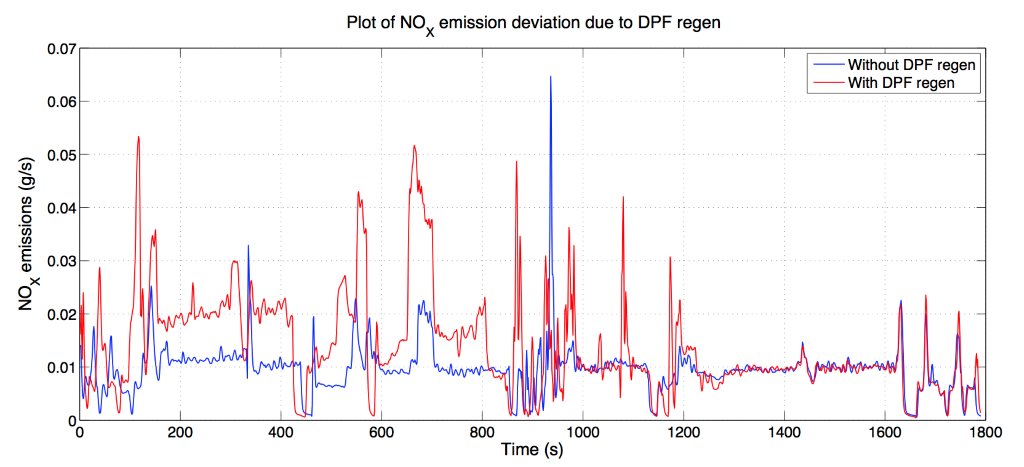There are two types of diesel particulate filter (DPF) regeneration which can occur without external intervention by the driver or a mechanic. The first is passive regeneration which happens when high exhaust temperatures reached during intensive use (normally either long spells of motorway driving or hill climbing) automatically burn off the trapped diesel particles. The other is active regeneration of the DPF where the ECU is programmed to initiate post combustion fuel injection to increase the exhaust temperature and burn away diesel particles when the filter becomes around 45 per cent full.
If either type of regeneration occurs whilst we are conducting an on-road emissions test we have to scrap the test and start again. So, we keep a careful eye on the exhaust temperature, which we measure using our PEMS equipment, to monitor spikes which indicate regeneration. As a result of this process we have recorded the regeneration activity, in terms of both occurrences and emissions output, and the results are not what you might expect.
One thing we have noticed is that regeneration will often happen after the extra-urban phase of the test, during the urban phase. Thus the opportunity for passive regeneration has been missed and active regeneration takes place instead.
Why does this matter? Well, firstly there is the cost to the operator as active regeneration requires the engine to work harder to reach the required temperature and this reduces fuel economy by as much as 5mpg. But not only that, as can be seen from the graph below, active regeneration has a significant and negative impact on NOx emissions.
Graph by Joseph Ruxton, Imperial College London robin.north@imperial.ac.uk
NOx, a major source of air pollution, can as much as double during regeneration due to late fuel injection and increased engine temperatures. If this happens in town and city environments rather than on the motorway, it could have an even greater negative impact on human health. Although it should be noted that the negative effective of the rise in NOx is offset somewhat by the primary NO2 reduction the regeneration is designed to achieve.
Another observation on active regeneration concerns the new cars we test. Because every vehicle What Car? receives to test drive and review is passed to Emissions Analytics who then tests it to record the data which powers True MPG, many of the cars we are testing are very new, with only a few hundred miles on the clock, if that. Yet we are finding that active DPF regeneration can on occasionally take place during the course of the urban phase of our test. It is unlikely that the DPF is 45 per cent full on such a new vehicle, so what is the trigger for regeneration? We haven’t found the answer to this yet, so if you have any ideas please do get in touch.
More still needs to be understood on the impact of DFP regeneration in real-world conditions and Emissions Analytics is working with Imperial College London to provide data and analysis to investigate the subject further. What is clear is that the anomalies described above, combined with the issue of illegal removal of DPFs from older vehicles, means that it is likely that more discussion on this subject will be required in the near future.
Please feel free to use or share this information with a credit to Emissions Analytics.


